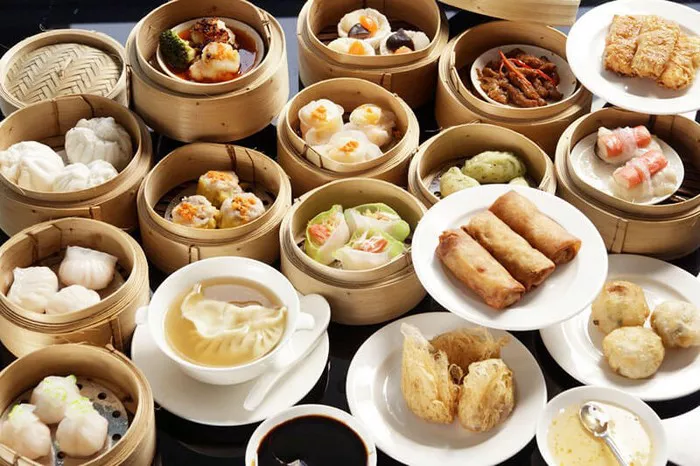Chinese cuisine offers a wide range of flavors, textures, and ingredients, but many dishes can be high in sodium. Sodium is an essential mineral that helps regulate fluids in the body, but too much can lead to health problems like high blood pressure, kidney disease, and stroke. If you’re trying to reduce your sodium intake, it’s important to choose lower-sodium options when enjoying Chinese food.
This article explores the concept of low-sodium Chinese food, how to make healthier choices at a Chinese restaurant or when ordering takeout, and what to look for in specific dishes.
Understanding Sodium in Chinese Food
Before we dive into specific dishes, it’s helpful to understand why Chinese food often contains high levels of sodium.
Chinese food can be salty for several reasons:
Soy Sauce: Soy sauce is a primary seasoning in Chinese cooking and contains a lot of sodium. Most soy sauces have about 1,000 milligrams (mg) of sodium per tablespoon.
Oyster Sauce and Hoisin Sauce: These sauces also add a lot of salt to Chinese dishes. Even a small amount can significantly increase the sodium content.
Prepared Broths: Many soups and stir-fries use broths that are high in sodium.
Canned Vegetables: Some restaurants use canned vegetables, which may have added salt for preservation.
Seasoning Blends: Chinese seasoning packets and pre-made mixes often contain high amounts of sodium.
Tips for Choosing Low-Sodium Chinese Food
When you’re craving Chinese food, but want to keep your sodium intake low, there are a few simple strategies to help you make healthier choices.
Ask for Low-Sodium Soy Sauce: Many Chinese restaurants offer a low-sodium version of soy sauce. This can help reduce the overall sodium content in a dish. If it’s not offered on the menu, ask if it can be substituted.
Avoid Sauces and Broths: Sauces and broths can be the main source of sodium in many dishes. Choose stir-fried dishes instead of soups or sauces-heavy dishes like General Tso’s Chicken or Sweet and Sour Pork.
Request Less Sauce: If you’re ordering a dish with sauce, you can ask for the sauce on the side or to be used sparingly. This allows you to control how much sauce is added to your meal.
Opt for Steamed Dishes: Many Chinese restaurants offer steamed versions of their dishes, which can be lower in sodium than those that are stir-fried or deep-fried. Steamed vegetables, fish, and chicken are great options.
Choose Simple Dishes: Basic vegetable, rice, or noodle dishes are often lower in sodium compared to complex, sauce-heavy dishes. Look for options like steamed rice or stir-fried vegetables.
Low-Sodium Chinese Dishes to Consider
Here are some popular Chinese food dishes that tend to be lower in sodium. These options are not only flavorful but also healthier choices for those looking to cut back on salt.
1. Steamed Vegetables
Steamed vegetables are a great low-sodium option. Most Chinese restaurants offer a variety of vegetables like broccoli, snow peas, bok choy, and mushrooms. When steamed, they retain their natural flavors without the need for excessive salt. Ask the restaurant to prepare them without adding any salt or soy sauce.
2. Steamed Fish
Fish, particularly white fish like tilapia or cod, is often served steamed in Chinese cuisine. Steaming fish preserves its delicate flavor without requiring the addition of salty sauces. Pair it with some fresh ginger and a splash of low-sodium soy sauce for a burst of flavor.
3. Plain Steamed Rice
Rice is a staple in Chinese food, and plain steamed rice is naturally low in sodium. This makes it a great base for many dishes, especially when you’re trying to balance your meal with healthy proteins and vegetables. Avoid fried rice or rice dishes with heavy sauces, as these can add a lot of sodium.
4. Chop Suey (without sauce)
Chop suey is a stir-fry dish made with vegetables and proteins like chicken, shrimp, or pork. Many restaurants offer a version of chop suey that is stir-fried with little or no sauce. If you ask for it without soy sauce, you can enjoy a low-sodium version of this dish. Pair it with steamed rice or noodles for a balanced meal.
5. Egg Drop Soup
Egg drop soup is a simple broth-based soup made with eggs, cornstarch, and a light broth. While some versions of this soup can be high in sodium, it’s usually lighter than other soup options. To make it lower in sodium, ask for it to be prepared with low-sodium broth.
6. Vegetable Lo Mein (without sauce)
Lo mein noodles are often stir-fried with a variety of vegetables and proteins. By requesting a vegetable-only lo mein with less or no sauce, you can enjoy a tasty, lower-sodium version of this dish. You can even ask the restaurant to skip the added salt and use less soy sauce.
7. Kung Pao Chicken (with less sauce)
Kung Pao chicken is traditionally made with chicken, peanuts, and vegetables. While this dish can be high in sodium due to the sauce, you can ask for it to be made with less sauce or with a lighter version of the sauce. The peanuts and vegetables provide a lot of flavor, so you don’t need too much sauce to enjoy it.
8. Moo Shu Vegetables (without hoisin sauce)
Moo shu vegetables are typically served with thin pancakes and a flavorful sauce. The sauce, often hoisin, can be high in sodium. Ask for the dish without the hoisin sauce or ask for a lighter version. The vegetables, such as cabbage, mushrooms, and carrots, are naturally low in sodium.
9. Sweet and Sour Chicken (without sauce)
Sweet and sour chicken is a popular dish, but the sauce is typically very sweet and salty. You can ask for the sauce on the side or opt for grilled or stir-fried chicken instead. If you still want a tangy flavor, a squeeze of fresh lime or lemon can be a good alternative.
10. Stir-Fried Tofu with Vegetables
Tofu is an excellent plant-based protein and is often stir-fried with a mix of vegetables. Tofu absorbs flavors well but does not need a lot of sauce to taste good. By ordering stir-fried tofu with vegetables and asking for light sauce or no sauce, you can enjoy a healthy and low-sodium meal.
Ways to Make Chinese Food at Home with Lower Sodium
Making Chinese food at home gives you full control over the amount of sodium you use. Here are some tips to prepare lower-sodium Chinese food in your own kitchen:
Use Low-Sodium Soy Sauce: If you’re cooking at home, choose low-sodium soy sauce to reduce the sodium content in your dishes.
Make Your Own Sauces: Instead of using store-bought sauces, which can be high in sodium, try making your own. Use ingredients like garlic, ginger, rice vinegar, and sesame oil to create flavorful sauces without the salt.
Use Fresh Ingredients: Fresh vegetables and meats are naturally lower in sodium than their canned or processed counterparts. Opt for fresh ingredients when cooking at home.
Limit MSG: Many Chinese dishes contain MSG, a flavor enhancer that can contribute to high sodium levels. If you’re sensitive to sodium or just want to cut back, try making dishes without MSG.
Conclusion
While Chinese food can sometimes be high in sodium due to ingredients like soy sauce and broths, there are plenty of ways to enjoy delicious Chinese meals while keeping your sodium intake low. Opt for steamed dishes, ask for sauces on the side, and choose simple preparations like stir-fries with fresh vegetables and lean proteins. By making mindful choices, you can enjoy the flavors of Chinese cuisine without compromising your health.
Related topics:

























